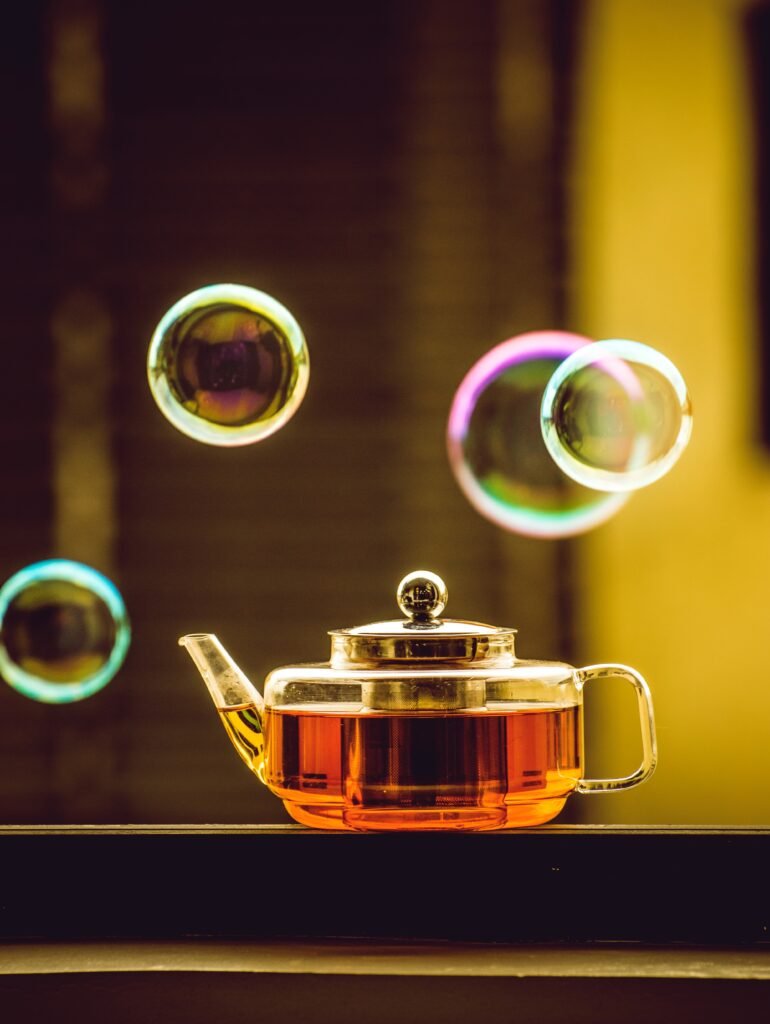Nestled amidst the mist-covered slopes of the Himalayas, Darjeeling tea emerges as a crown jewel in the world of teas. With its delicate aroma, floral notes, and enchanting character, Darjeeling tea is a testament to nature’s artistry and the craftsmanship of those who nurture it. In this article, we invite you to journey into the heart of the Darjeeling tea region, exploring its history, unique characteristics, and the profound experience it brings to tea enthusiasts worldwide. Darjeeling Tea: Unveiling the Elegance of the Himalayas in Every Sip

- Introduction: Captivated by the Essence of Darjeeling Tea
- The Landscape that Nurtures: Darjeeling’s Unique Terroir
- The Four Flushes of Darjeeling: A Symphony of Seasons
- First Flush: Embracing Spring’s Gentle Awakening
- Second Flush: Unveiling the Richness of Summer
- Monsoon Flush: Nature’s Quenching Embrace
- Autumn Flush: A Subtle Farewell to the Harvest
- From Bush to Brew: The Art of Darjeeling Tea Processing
- The Darjeeling Tea Experience: Aromatic Delights and Palate Pleasures
- Global Fame, Protected Name: Darjeeling’s GI Tag
- The Art of Brewing Darjeeling Tea: Enhancing the Experience
- Health Benefits: Beyond Taste, a Cup of Wellness
- Myths and Realities: Dispelling Common Misconceptions
- Tea Tourism in Darjeeling: Exploring the Gardens
- Conclusion: Sip the Majesty of the Himalayas
- FAQs
Introduction: Captivated by the Essence of Darjeeling Tea
Imagine a tea that embodies the beauty and majesty of the Himalayas. Darjeeling tea does just that, captivating tea lovers with its exquisite flavor profile and unparalleled charm.
The Landscape that Nurtures: Darjeeling’s Unique Terroir
Darjeeling’s terroir – a combination of soil, altitude, climate, and geography – creates the perfect environment for tea cultivation. The region’s misty hills and cool temperatures contribute to the unique character of Darjeeling tea.
The Four Flushes of Darjeeling: A Symphony of Seasons
Darjeeling tea’s character transforms with each flush, representing the changing seasons. The first, second, monsoon, and autumn flushes each offer distinct flavors and aromas that reflect the time of year.
First Flush: Embracing Spring’s Gentle Awakening
The first flush, often referred to as the “Champagne of teas,” is harvested in spring. Its delicate leaves yield a cup with light, floral notes and a refreshing briskness.
Second Flush: Unveiling the Richness of Summer
The second flush is Darjeeling’s most famous and sought-after harvest. The leaves develop a muscatel flavor, creating a cup that is both rich and complex.
Monsoon Flush: Nature’s Quenching Embrace
The monsoon flush arrives during heavy rains, infusing the leaves with a unique earthiness. While less celebrated, it offers a distinct taste that resonates with the monsoon season.
Autumn Flush: A Subtle Farewell to the Harvest
The autumn flush rounds off the tea season with leaves that yield a cup boasting a mellow and balanced character, embodying the transitional nature of autumn.
From Bush to Brew: The Art of Darjeeling Tea Processing
The journey from tea bush to teacup is a delicate and intricate process. Darjeeling tea processing involves withering, rolling, oxidation, and firing, each step contributing to its unique qualities.
The Darjeeling Tea Experience: Aromatic Delights and Palate Pleasures
The experience of sipping Darjeeling tea is akin to unwrapping a bouquet of flowers. Its fragrant aroma and layers of flavor make every sip a sensory delight.
Global Fame, Protected Name: Darjeeling’s GI Tag
Darjeeling tea’s reputation is so esteemed that it holds a Geographical Indication (GI) tag. This designation protects its authenticity and ensures that only tea from the region can be labeled as Darjeeling tea.
The Art of Brewing Darjeeling Tea: Enhancing the Experience
Brewing Darjeeling tea is an art in itself. From water temperature to steeping time, every detail affects the outcome of the cup, allowing you to unlock the tea’s full potential.
Health Benefits: Beyond Taste, a Cup of Wellness
Beyond its delightful taste, Darjeeling Chai offers a range of health benefits. From antioxidants to potential stress reduction, this tea contributes to overall well-being.
Myths and Realities: Dispelling Common Misconceptions
Myths often surround Darjeeling Chai. By addressing common misconceptions, we shed light on the true essence and qualities of this esteemed tea.
Tea Tourism in Darjeeling: Exploring the Gardens
Darjeeling’s tea gardens attract enthusiasts from around the world. Tea tourism offers visitors a chance to witness the tea-making process firsthand and immerse themselves in the tea culture of the region.
Conclusion: Sip the Majesty of the Himalayas
With each sip of Darjeeling Chai, you’re transported to the serene slopes of the Himalayas, where nature’s beauty and human craftsmanship converge to create an unforgettable experience.
FAQs
1. Is Darjeeling Chai only available in loose leaf form? No, Darjeeling Chai is available in various forms, including loose leaf, tea bags, and even artisanal blends.
2. Can Darjeeling Chai be brewed using milk and sugar? While some prefer to drink Darjeeling Chai without additives, it can certainly be enjoyed with milk and sugar, based on personal taste.
3. Is Darjeeling Chai considered a black tea? Yes, Darjeeling Chai is commonly categorized as a black tea, but it can also exhibit characteristics of green and oolong teas, depending on the flush.
4. Does Darjeeling Chai have caffeine? Yes, Darjeeling tea contains caffeine, but the content can vary based on factors like flush and processing.
5. Can I visit Darjeeling Chai gardens as a tourist? Absolutely! Many tea gardens in Darjeeling offer guided tours for tourists to explore the tea-making process and immerse themselves in the picturesque surroundings.
Contact Details:- 9499347308
Visit Our Site:-zirconshop.in
Official YouTube Channel For Business :- Zircon Blogs
